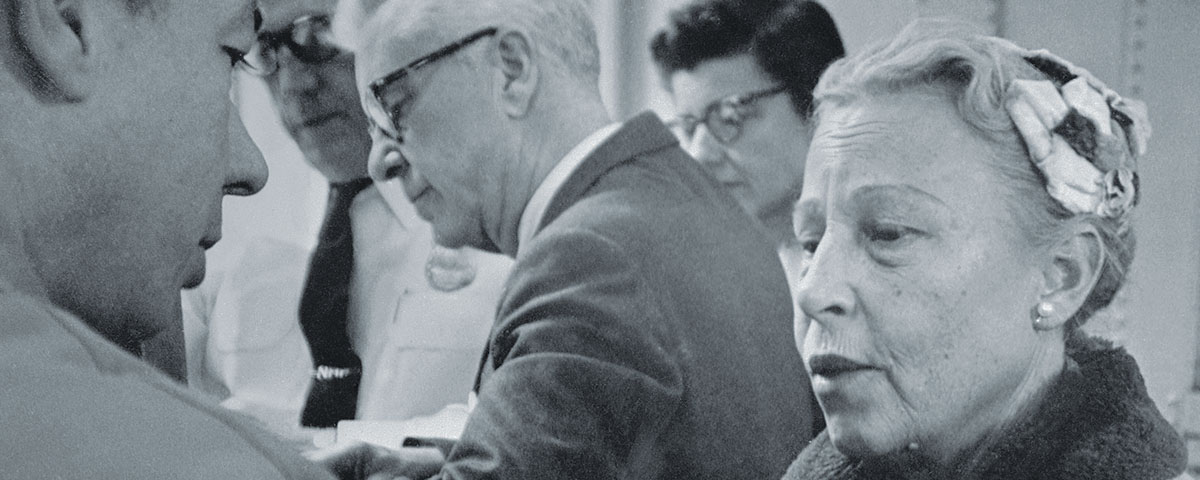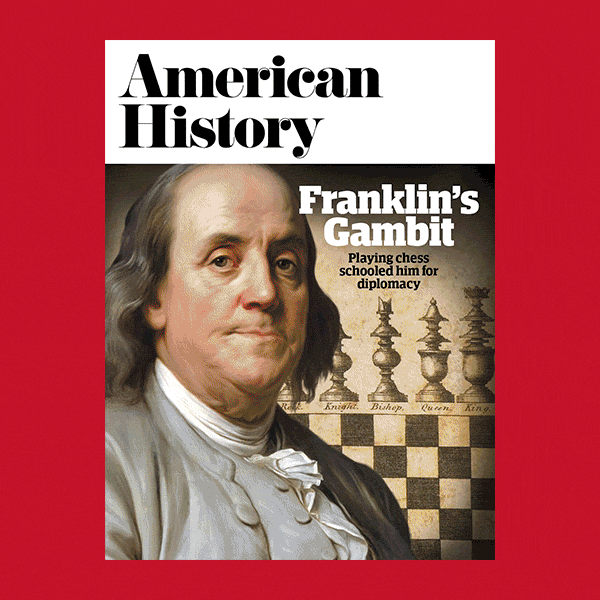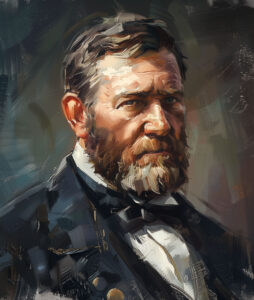In 1961, former concert singer Estelle Griswold and C. Lee Buxton, a professor of gynecology at Yale Medical School, decided to get arrested. They succeeded, and were convicted. The court fined each $100. As a result, the Bill of Rights acquired new meaning and scope for all Americans.
Griswold, a retired contralto, was running the Planned Parenthood League of Connecticut; Buxton was the branch’s medical director. Connecticut posed a unique problem for Planned Parenthood: the state still had on its books twin statutes passed in 1879. One outlawed use of any contraceptive device. The other made it a crime to “assist, abet, or counsel” anyone on the use of such devices.
Showman P.T. Barnum, then chairman of the Connecticut legislature’s Joint Committee on Temperance, had gotten the laws passed. They reflected a movement spurred by morals crusader Anthony Comstock, who in 1873 had persuaded Congress to make it a federal crime to use the U.S. mails to send “any article whatsoever for the prevention of conception.” States followed suit, imposing bans on distributing literature explaining contraception. Barnum pushed Connecticut further, outlawing not just information about contraceptive devices but also their use.
After World War II, Victorian attitudes toward sex and the laws they fostered faded to the point of quaintness in most of the United States, but Connecticut lawmakers would not repeal the bans. The state’s highest court upheld the seldom-enforced laws, which posed a genuine threat. There was little impact on “middle-class and wealthy people who could afford private medical care, since doctors would often ignore the laws,” said Emory University law professor Mary L. Dudziak. “The lack of clinics primarily harmed lower-income women who needed the free or low-cost services birth control clinics provided.”
Contraception advocates found it tricky to get the U.S. Supreme Court to address the issue. As early as 1943, the topic reached the high court in a case brought by Yale Medical School professor Wilder Tileston. However, only two weeks after hearing oral arguments, the justices declared that they should not have taken the case because Tileston could not show that he personally was in any jeopardy.
In 1961—a year after the Food & Drug Administration widened access to contraception by approving sale of a birth control pill for women—the Supreme Court again took up the issue, in cases brought by Buxton and two of his patients. However, the justices ruled that the plaintiffs, unable to demonstrate harm, were in no position to challenge the law.
Buxton and Griswold, to assure that they had standing to take a case to the high court, decided to bring about a confrontation in which the Connecticut contraception ban indisputably injured them. The former singer and the doctor not only flouted the ban but also flaunted their defiance. On June 20, 1961—a day after justices refused to rule on the Connecticut law’s legitimacy—the state Planned Parenthood League announced its intent to open a public birth control clinic “as rapidly as possible.” At a press conference the same day, Griswold declared she would “welcome prosecution by the state.” She would run the clinic, with Buxton as medical director.
On November 1, the clinic opened in New Haven near the Yale University campus at 79 Trumbull Street. On day one, the staff saw 10 patients. Day two, Griswold fanned the fires with a press conference, leaving local authorities little wiggle room. The New Haven police came calling. Griswold handed detectives copies of the literature the clinic was distributing. The police returned on November 9 to shutter the clinic and arrest Griswold and Buxton.
A local court found the two guilty of breaking the Barnum law. The state appellate court and Connecticut’s Supreme Court upheld the convictions. At last, real litigants could document real harm—those $100 fines—from the contraception ban. The Supreme Court would have trouble dodging this case. High court lore has it that the justices moved unanimously to review the Griswold and Buxton convictions.
The decision was not even close. Justice Potter Stewart said he thought the Connecticut law “silly,” but neither he nor Justice Hugo Black thought it unconstitutional. The other seven justices, however, stood ready to void the ban. The challenge was finding a constitutional basis for doing so.
All cases in which the Court had deemed a statute unconstitutional were grounded on specific words in the Constitution, often from the Bill of Rights. A law impinging on freedom of religion or speech could not stand, for instance. But what original language could be stretched to mean “use of contraception”?
Justice John Marshall Harlan II argued that no specific provision in the Bill of Rights need be identified; Harlan said he found enough basis in the single word “liberty,” as employed in the 14th Amendment provision that no state may “deprive any person of life, liberty, or property, without due process.” But the rest of the court did not want to embrace so sweeping an interpretation.
Justice William O. Douglas was assigned to write the opinion for the majority. Douglas decided his hook was the First Amendment’s guarantee of the right of association, until then mainly cited regarding participation in political groups. But during its 10 days in business, Connecticut Planned Parenthood’s clinic had taken care to advise only married women. Douglas reasoned that marriage constituted “an association for as noble a purpose as any involved in our prior decisions”—an association Connecticut’s ban infringed upon.
Douglas asked colleague William J. Brennan Jr. for his views. Justice Brennan urged him to go broader, suggesting that the case involved a central issue: personal privacy. His comments prodded Douglas to transform what could have been a ruling of limited importance into a core precedent invoked in many subsequent landmark cases. Privacy had been a tenet of many Supreme Court decisions, but always in the context of a right specified in the Constitution. Douglas’s 1965 masterstroke was to insist that “specific guarantees in the Bill of Rights have penumbras, formed by emanations from those guarantees that help give them life and substance.” In Latin, penumbra—“shadow’s edge”—connotes umbrella-like protection. Such penumbras, which emanate from all 10 amendments in the Bill of Rights, “create zones of privacy,” Douglas wrote. In other words, a law can be unconstitutional even if it does not tread on a right the Constitution enumerates—if that law infringes a citizen’s inherent right to be left alone.
That concept of a penumbra guaranteeing privacy has proved useful to justices. In 1969, the Court cited Griswold v. Connecticut in finding unconstitutional bans on adults’ possession of pornography. Griswold has underpinned a variety of decisions, including two 1972 rulings: one voiding a zoning ordinance preventing a woman from having her granddaughter live in her house, the other ending state bans on abortion. In 2015, a majority of the Court invoked Griswold in requiring that states allow same-sex couples to marry.






